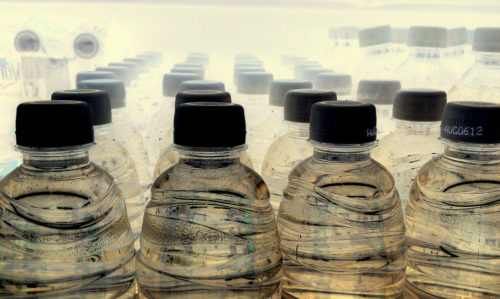
June 13, 2016; AdWeek
What goes into your morning smoothie? How about some greens, a handful of berries, half of an avocado, and dirty water with a touch of Hepatitis A? For far too many places around the world, polluted, dirty water and the accompanying diseases that swim in it, such as Hepatitis A, salmonella, and the norovirus, are an everyday biohazard. Tasty, a food video production component of BuzzFeed, and Charity: Water, a nonprofit focused on increasing accessibility to fresh water, have teamed up in the #FightDirty campaign to raise awareness for this public health crisis. Unlike other campaigns, however, this approach just might be creative enough to catch and keep your attention.
Following Flint, Americans are not completely unfamiliar with the realities of the clean water crisis. However, the seriousness of the situation still escapes the understanding of some of the Western, developed world. According to the World Health Organization and UNICEF, about 663 million people, or 1 in 10 people around the world, lack access to safe drinking water.
DigitasLBi, a marketing and technology agency, produced a special three-video series as part of the #FightDirty campaign in partnership with BuzzFeed and Charity: Water. The series tries to visually illustrate how essential water is to our everyday lives. As with Tasty’s other videos, this series features how-to videos for three different recipes, with a dirty water twist: Typhi (infectious disease) Superfood Smoothies, Hirundea (leeches) Lemonade and Skillet Cornbread with Anabaena (toxic algae). Complete with the same upbeat music, visuals, and structure of BuzzFeed’s other Tasty videos, this series looks much like other food production videos we come across on social media. Indeed, a viewer familiar with the BuzzFeed videos may not even notice something is wrong until the very end.
For example, just in time for summer, the series includes a how-to video for making lemonade. However, replace the clean water with dirty water mixed with hirudinea, or leeches. The video instructs that the lemonade drink should be served with a stick on the side, “to clear the leeches from your throat.” The recipes also include directions to strain the leeches before serving the beverage. At the end, the viewer is left with a brief, but effective statement, “Dirty water isn’t tasty. For 663 million, it’s deadly.”
Sign up for our free newsletters
Subscribe to NPQ's newsletters to have our top stories delivered directly to your inbox.
By signing up, you agree to our privacy policy and terms of use, and to receive messages from NPQ and our partners.
Another video shows the process of making cornbread, with the unique addition of anabaena, toxic algae in the water that, when cooked, apparently leaves the normally yellow cornbread batter splattered with green, gooey blotches. The video is enough to leave you queasy, but give it a watch, anyway.
These videos from BuzzFeed are normally peppered throughout our newsfeeds on Facebook and dashboards on Twitter, giving this series a morbid sense of realism. Most of us wouldn’t second-guess adding water to a recipe because clean water is a staple in our lives. According to Charity: Water’s brand content leader Tyler Riewer, this was the thought process behind crafting the campaign. They wanted to “catch people in an everyday moment and bring people into reality. Each of these videos unpacks what it looks like to have dirty water as a part of your life.”
The videos do provide some educational material to convey the context of the crisis, but the effort could be improved. The videos are on Charity: Water’s YouTube page; however, there is no description for the videos, nor do they link back to the nonprofit’s site. Moreover, ironically, while making a video about dirty water, there is the inherent contradiction of the amount of food waste that was produced.
However, framing the issue in these engaging and normalized videos is innovative and somewhat embarrassingly effective. As noted by AdWeek, “‘Fight Dirty’ aims to move away from the possibility of guilt tripping viewers with tear-jerking work to raise donations for clean water around the world.”
NPQ has covered the benefits and downfalls of poverty porn, which, although it might be effective, is still ethically questionable in how it generates donations. As charities continue to adapt in the digital age and compete to ensure their cause attracts the right amount of attention, this video series and its message, will likely stick with the viewer.—Shafaq Hasan













